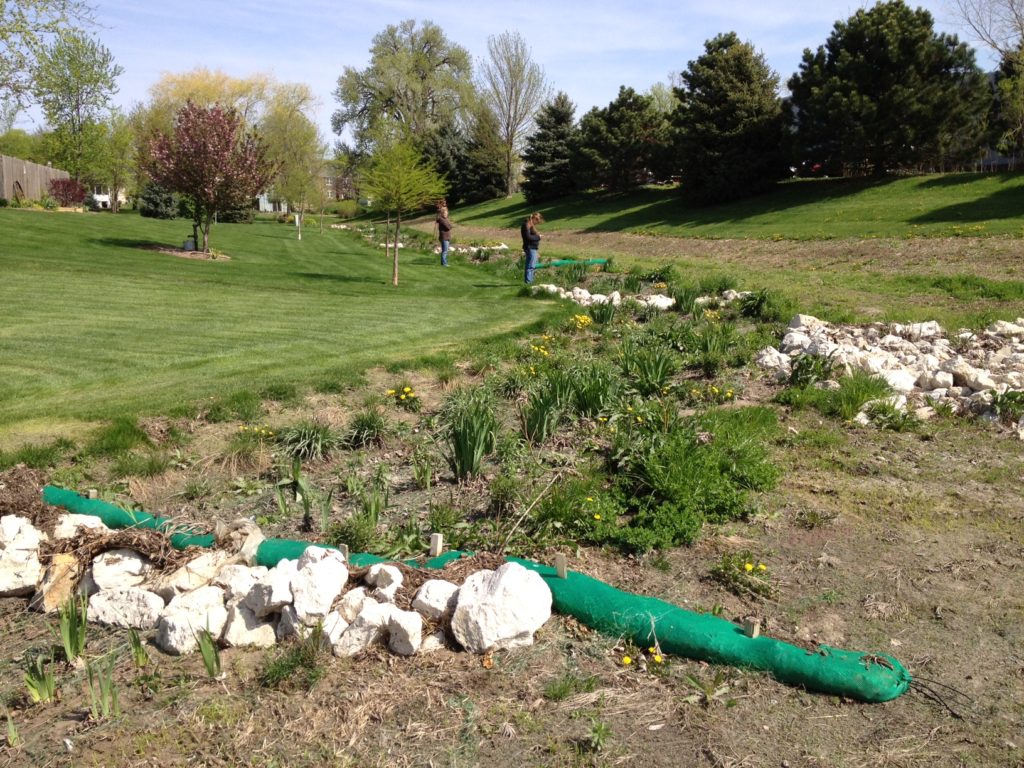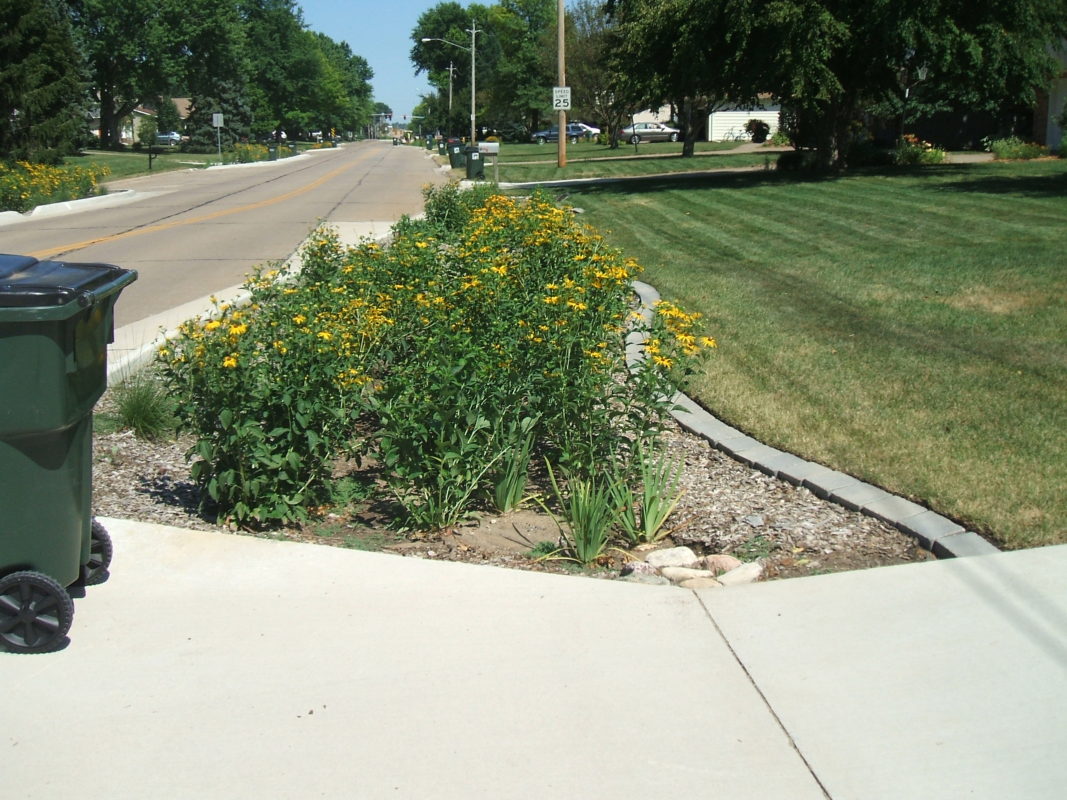Bioswales are vegetated channels specifically designed to manage stormwater by slowing water flow, promoting infiltration, and filtering pollutants. Unlike traditional drainage ditches that rapidly channel water away, bioswales work with nature to clean and manage runoff. They feature gently sloped sides and are engineered to handle both water quality treatment for small storms and safely convey runoff during larger storms. With their attractive plantings and natural appearance, bioswales can be effective features along roadways, in parking lots, or at property boundaries while providing valuable ecological benefits.
Key components
Vegetation: Native plants with deep root systems stabilize the soil, slow water flow, absorb pollutants, and create habitat. Plant selection should consider both function and aesthetics.
Check dams: These low berms placed perpendicular to water flow create a series of cells that slow runoff, prevent erosion, and promote infiltration and pollutant removal.
Engineered soil media: A specialized soil mix with proper infiltration rates supports healthy plant growth while filtering pollutants from runoff.
Drainage layer: Clean, washed stone surrounding a perforated underdrain allows excess water to move through the system when soils are saturated.
Underdrain system (optional): Perforated pipes collect filtered water and convey it to an appropriate outlet, ensuring the bioswale drains properly between storm events.



